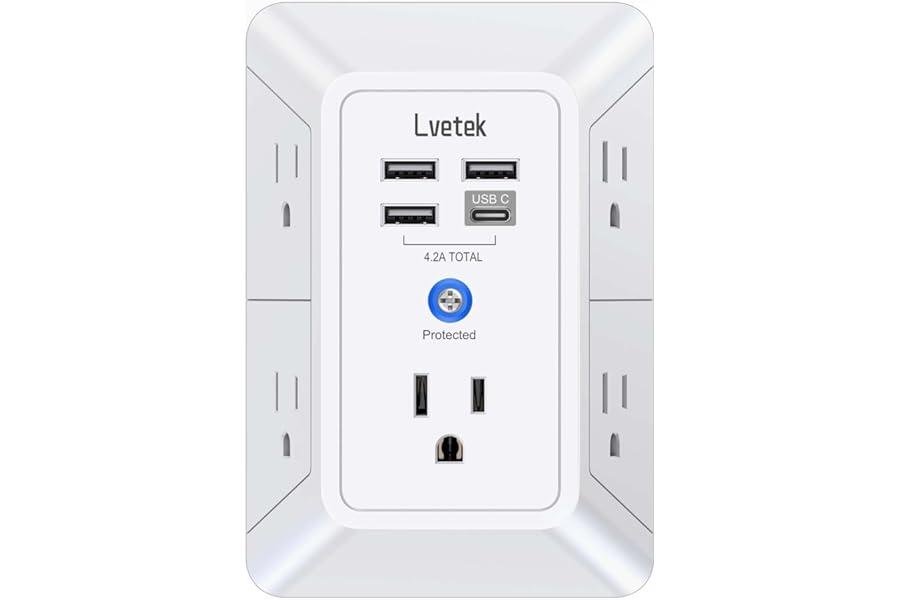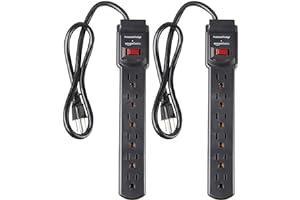Best Selling Surge Protectors: A Comprehensive Guide
In today's world, our electronic devices are essential to our daily lives. From smartphones and laptops to televisions and gaming consoles, we rely on these devices to stay connected, entertained, and productive. However, these devices are also vulnerable to damage from power surges, which can occur due to a variety of factors, including lightning strikes, faulty wiring, and even everyday appliances.
What is a Surge Protector?
A surge protector is a device that protects electronic devices from damage caused by power surges. Surge protectors work by diverting excess voltage away from your devices and grounding it. This prevents the high voltage from reaching your devices and causing damage.
Links to Best Selling Surge Protectors
- Surge Protector USB Outlet Extender - 5-Outlet Splitter Wall Charger with 4 USB Ports (1 USB C) 3 Sided 1680J Power Strip Multi Plug Outlet Wall Adapter Spaced for Home Travel Office, ETL Listed (paid link)
- Amazon Basics 6-Outlet, 200 Joule Surge Protector Power Strip, Pack of 2, Rectangle, 2 Foot, Black (paid link)
How Do Surge Protectors Work?
Surge protectors typically contain a metal oxide varistor (MOV), which is a semiconductor device that acts as a voltage-dependent resistor. When the voltage across the MOV reaches a certain level, the MOV begins to conduct electricity, diverting the excess voltage away from your devices and grounding it.
Types of Surge Protectors
There are a variety of surge protectors available on the market, each with its own unique features and benefits. Some of the most common types of surge protectors include:
- Power strips: Power strips are the most common type of surge protector. They typically have multiple outlets, allowing you to plug in multiple devices at once. Power strips with surge protection typically have a joule rating, which indicates the amount of energy the surge protector can absorb before it fails.
- Wall-mounted surge protectors: Wall-mounted surge protectors are installed directly into a wall outlet. They offer a more permanent solution for surge protection and are often used in areas where there is a high risk of power surges, such as near windows or in areas with faulty wiring.
- Portable surge protectors: Portable surge protectors are designed to be used with portable electronic devices, such as laptops and smartphones. They are typically small and lightweight, making them easy to carry around.
Choosing the Right Surge Protector
When choosing a surge protector, there are a few things you need to consider:
- Joule rating: The joule rating of a surge protector indicates the amount of energy it can absorb before it fails. The higher the joule rating, the more protection the surge protector will provide. For most home applications, a surge protector with a joule rating of 1000-2000 joules is sufficient.
- Number of outlets: Consider how many devices you need to protect. If you have a lot of devices, you will need a surge protector with multiple outlets.
- Features: Some surge protectors come with additional features, such as USB ports, a built-in circuit breaker, or a warranty. Consider which features are important to you when choosing a surge protector.
Conclusion
Surge protectors are an essential tool for protecting your electronic devices from damage caused by power surges. By choosing the right surge protector, you can help ensure that your devices are safe and protected.

